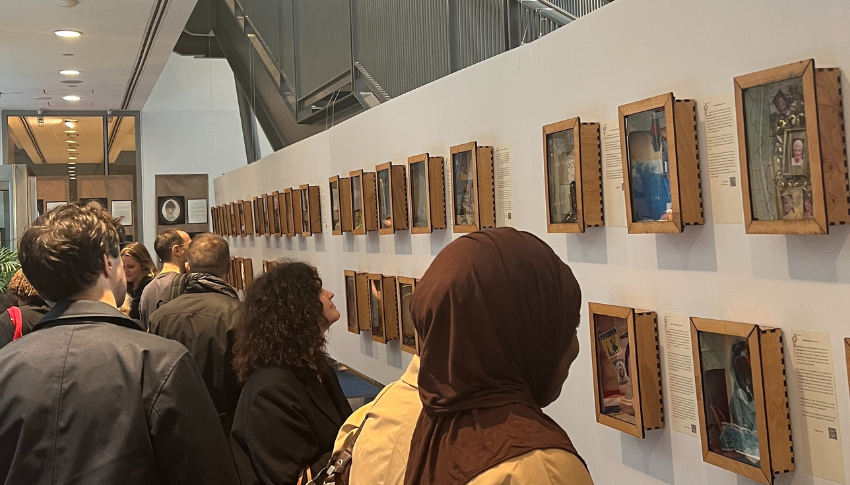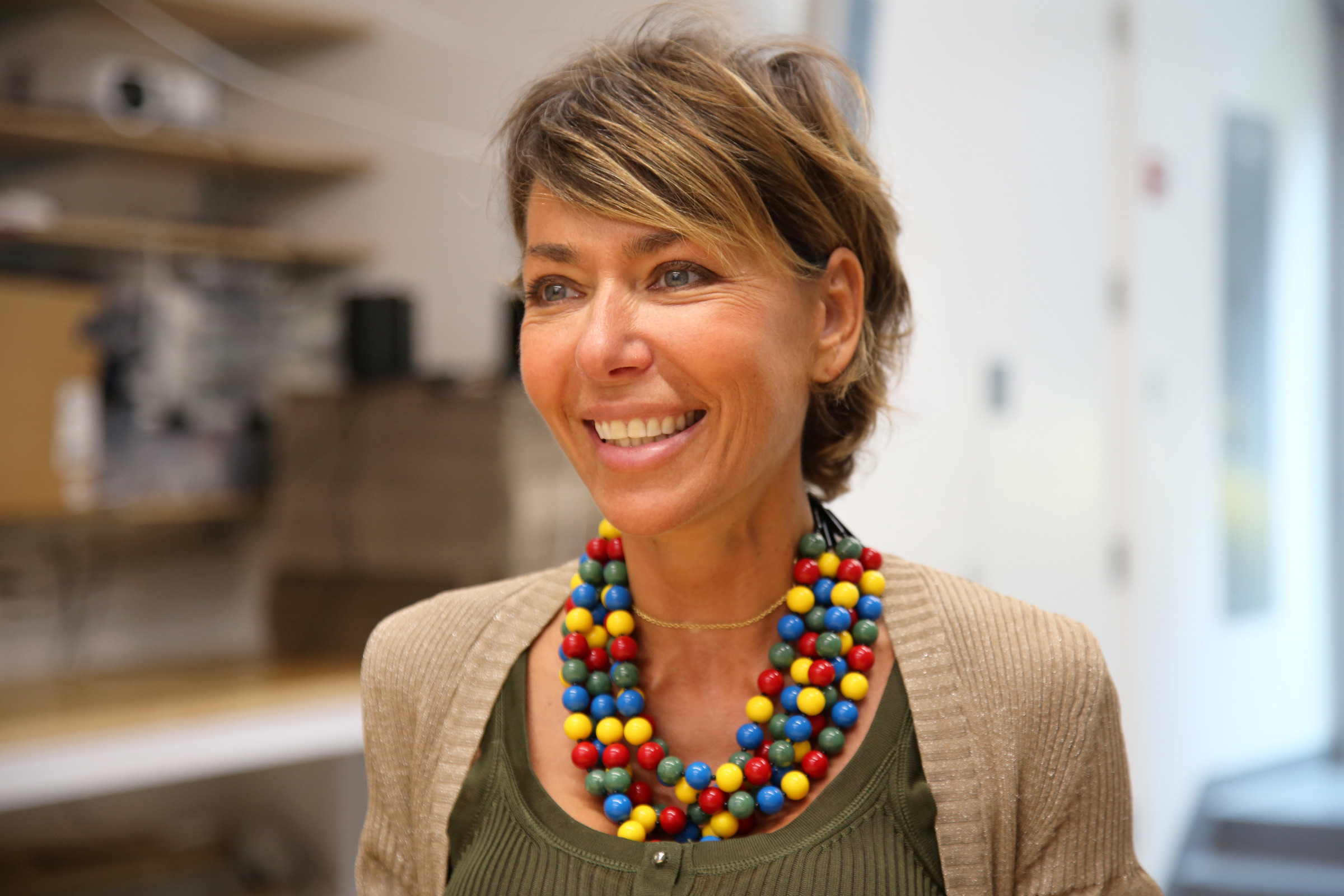On the morning of May 5, families and staff gathered around the grand staircase of the Lycée to discover a powerful student exhibition honoring the history of women’s right to vote. Titled Women Leading the Way: Femmes inspirées et femmes inspirantes, the installation featured original artworks created by our Year 5 students, under the guidance of art teacher Mireille Miller and the support of the entire grade-level team.
A Pedagogical and Interdisciplinary Journey
The project reflects Ms. Miller’s deep interest in women’s rights as both an artist and educator. Inspired by her own painting on lesser-known suffragists and suffragettes—Women Leading the Way: Femmes suffragistes & suffragettes—she launched this initiative to pass on the legacy of these activists to her students.
“I wanted the children to learn about the people who fought for the rights we have today. It’s essential that they understand we have a duty to protect that legacy—nothing is guaranteed. History is alive. I wanted them to see that they are part of it, and that their own stories shape the story of the world,” she says.
True to its spirit, the project unfolded across disciplines and languages.

In English class, students researched pioneers of human rights and gender equality, then wrote detailed biographies of these historic figures. In French class, they explored their own family histories, identifying the first woman in their lineage to vote—bridging personal memory with collective history.
In art class, students learned two creative techniques to express these stories. The first was the “three-pencil” technique—used by masters such as da Vinci, Rubens, and Watteau—which allowed them to draw expressive portraits of suffragists and suffragettes.
Student Gabriel portrayed Frances Ellen Watkins Harper, the first African-American woman to publish a novel, a staunch abolitionist, and co-founder of the National Association of Colored Women’s Clubs.

Student Sacha drew Sarah Emily Davies, founder of Girton College at Cambridge and a key figure in opening university education to women in the UK. Thanks to her efforts, University College London admitted women in 1870.
Students also explored assemblage art, inspired by Joseph Cornell’s shadow boxes. Each created a diorama honoring the first woman in their family to vote—a personal time capsule intertwining family history with a historic milestone.
Alexandre highlighted Adma, his Lebanese great-grandmother, who helped mobilize women to vote for the first time in 1956. His diorama featured black-and-white photos, a sewing machine, and a vintage newspaper front page—evoking her life as a rural housewife and community advocate.

Philippine recreated a classroom scene to honor her great-grandmother Jeanine, a young teacher who first voted at 21. Her diorama included chalk, a blackboard, and student desks. In her reflection, Philippine wrote: “She was curious, she often talked about politics! She felt equal to men. She raised her daughters to be independent, and I think she succeeded—my grandmother became a doctor.”

Building Cross-Curricular Skills and Civic Awareness
The project gave students a rich, hands-on learning experience that blended research, critical thinking, creative writing, and artistic expression. It also strengthened their bilingual identity and intergenerational connections, while deepening their understanding of civic responsibility and gender equality.
“I learned how my great-grandmother lived at a time when she couldn’t vote—and how unfair that was,” said Liv, presenting her diorama.
“I realized how different our lives and opportunities were,” said Karl, reflecting on his great-grandmother’s first vote in 1935. “It made me understand why it’s important that women vote.”
“I added the scales of justice because I wanted to show the importance of equality between men and women,” said Charly, explaining her tribute to her great-grandmother from Champagne.
🎥 You can listen to more student reflections on Instagram.
Congratulations to Mireille Miller, the entire fifth-grade teaching team, and all our students for this deeply inspiring project. Their artworks will be featured in a gallery exhibition in Chelsea in March 2026, as part of a broader initiative launched by Mireille in 2020 to commemorate the 100th anniversary of women’s suffrage in the United States—bringing together student creations from over 30 schools nationwide. Stay tuned!
About the Author :
Vannina Boussouf grew up on the Mediterranean island of Corsica, where bilingualism is an integral part of identity. She studied English and Spanish at the University of Corsica, and philology and letters in Cordoba, Spain, before starting a career as an elementary teacher and administrator. Vannina relocated to the United States in 2004, where she taught at the International School in Louisiana. She joined the Lycée in 2007 to direct the Primary School, and during her tenure, she has focused on innovative teaching methods that support the development of the whole child in a bilingual setting.


